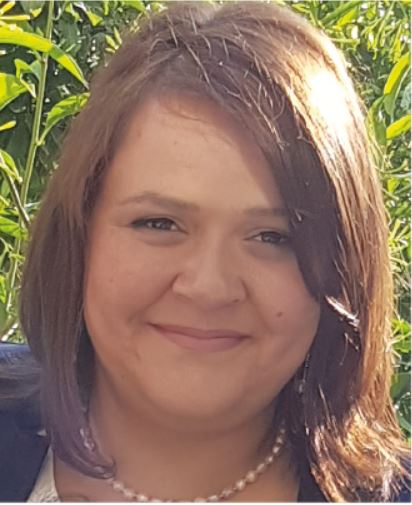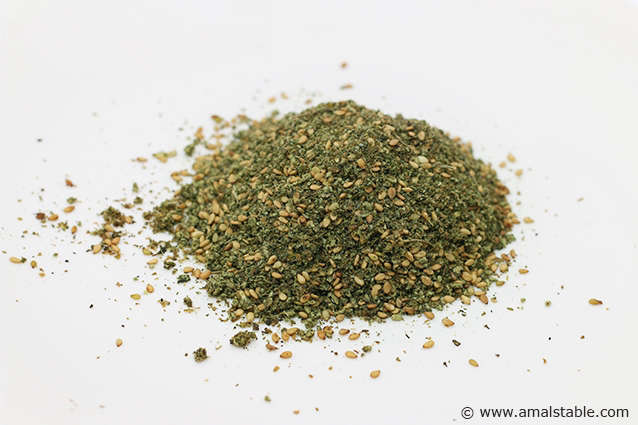When children are asked to name things that they love about their mothers, food is one of the most reoccurring items on their lists. They will tell you that they love her laser-beam eyes that seem to find lost toys and detect lies before they even make their way to their mouths. Answers will vary from one child to another, but generally children will cite their mother’s food as one of the things they love about her. Food’s emotional fingerprint is stamped into our memory and emotions at a very young age. Nothing tastes like mom’s food, but more importantly nothing feels like it. As we age, we pursue cooking to replicate those dishes in the hopes of reviving childhood memories and all the feelings that come with them, and in the hopes that we can create similar experiences for our own children. Food is, therefore, not just sustenance, and our journeys into our kitchens are not only a daily chore to put food on our family tables, but rather a deliberate, creative process in which memories, love, belonging, loss, celebration, and a sense of identity are created and engrained for both those of us who cook and those who eat.
Food is culture and not a simple hedonistic pleasure that lasts for the duration of a meal. If it were just that, then food memoires and food writing wouldn’t be among the most popular types of literature. I remember the first time I came to realize the power of food for me. I was in my second year of college in the United States and was considerably homesick. I went to the kitchen to make tabbouleh and stuffed eggplants for myself and friends coming over for dinner, and it was as if I were transposed back in time to my mother’s kitchen. As I recreated those two dishes, I was guided by my intuition, my visual memory, and my muscle memory as I felt my way around the kitchen and carved the eggplants, chopped the parsley, soaked the bourghul, and juiced the lemons. And when the food hit my tongue, my taste memory took me back to my mother’s kitchen again. The experience was powerful, but I am not sure it cured me of my homesickness; it perhaps made it even worse.
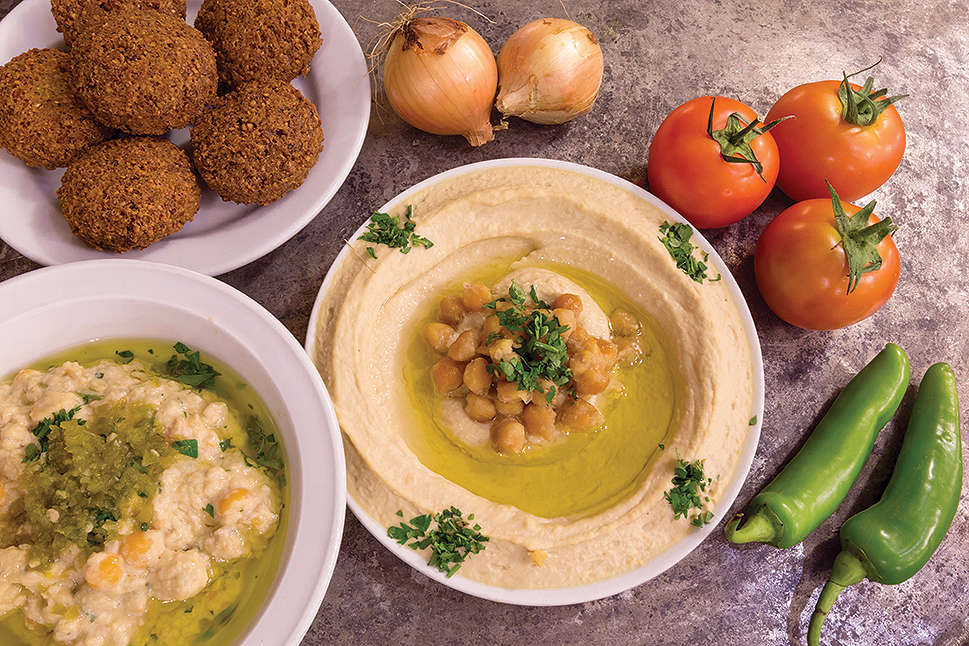
Food and cuisine are deeply engrained into our psyche, and it is no wonder that when someone tries to steal it, or claim it, or “appropriate” it as their own, our stomachs turn, quite literally and figuratively. The first time I stood in the grocery store holding in my hand a container of “Israeli hummus” nearly 22 years ago, I had to reconcile my feelings of homesickness, hunger, craving for food from home, and the fact that the hummus I knew was not Israeli. For me it was Palestinian, made with Nabulsi tahini, lemons from Tulkarem, and garbanzo beans dried by some old Palestinian woman in a nearby village, and rehydrated and cooked for hours by my mother. It made an appearance on our Friday breakfast table. And it was eat-it-by-the-spoon delicious, just ask my sister who until the age of five insisted on eating it with a spoon, she loved it so much. Little did I know (back then when I was a child) that 20-some years later, I would stand in the grocery store trying to convince myself not to buy the “Israeli hummus” and reach for the peanut butter instead, because deep down in my stomach, something turned, telling me that this would only culminate in a series of encounters with Israeli knafeh (a sweet made with cheese and pastry, soaked in sugar), falafel, sahlab (a starchy hot drink enjoyed mostly in winter), shakshouka (sautéed tomatoes with onions and sunny-side-up eggs), makloubeh (a dish with rice and fried cauliflower, eggplant, and potatoes), shawerma (a sandwich with shreds of meat, salad, and tahini sauce), and more, as I became more interested in food and cooking.
I most certainly do not want to spiral into a conversation of my hummus, your hummus. The conversation on hummus these days seems to take over much of the food-writing scene, including articles in peer-reviewed academic journals such as Gastronomica (published by the University of California Press) and mainstream media outlets such as The Guardian. Conversations on Middle Eastern cuisine must continue to be sophisticated and not trivialized. They rather need to remain cultured and complex, much like the subject matter that is multi-layered and diverse in its stories and history. On the other hand, this conversation is very personal and intimate. Who we are today and how we eat is largely shaped by the food presented to us as children. So although conversations on hummus may seem redundant, we need not degrade them into “Hummus Wars” as if they were some reality show on the Food Network. Neither can they be settled by a scholarly declaration of “Our Hummus,” as if to please two feuding sides into a deceiving claim of co-existence.
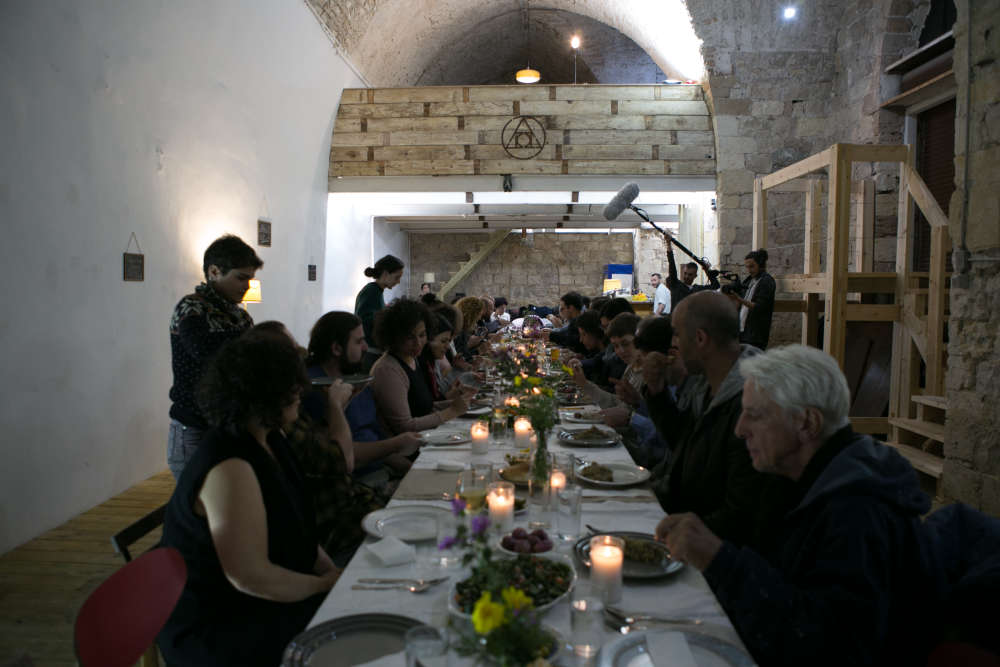
Photo by Rabi Salfiti.
It isn’t the claim to the food that bothers me, per se, because we Palestinians are aware that our claim to hummus isn’t an exclusive one but rather part of a mosaic of Middle Eastern and Levant cuisine. It is the underlying message and attempt to erase Palestinian and Arab claim to these dishes that is infuriating. “The controversy about Israel’s appropriation of Palestinian food has nothing to do with Jews eating Arabic food, but rather with a systematic approach to disappear Palestinians in all their details.” (Steven Salaita) It would be trivial and immature not to recognize that Arab Jews did exist and that they cooked and ate the cuisines of the countries and regions they lived in. But to attribute without the slightest recognition those dishes to Israel is nothing short of blatant, outright theft. Forget appropriation and call it exactly what it is, theft.
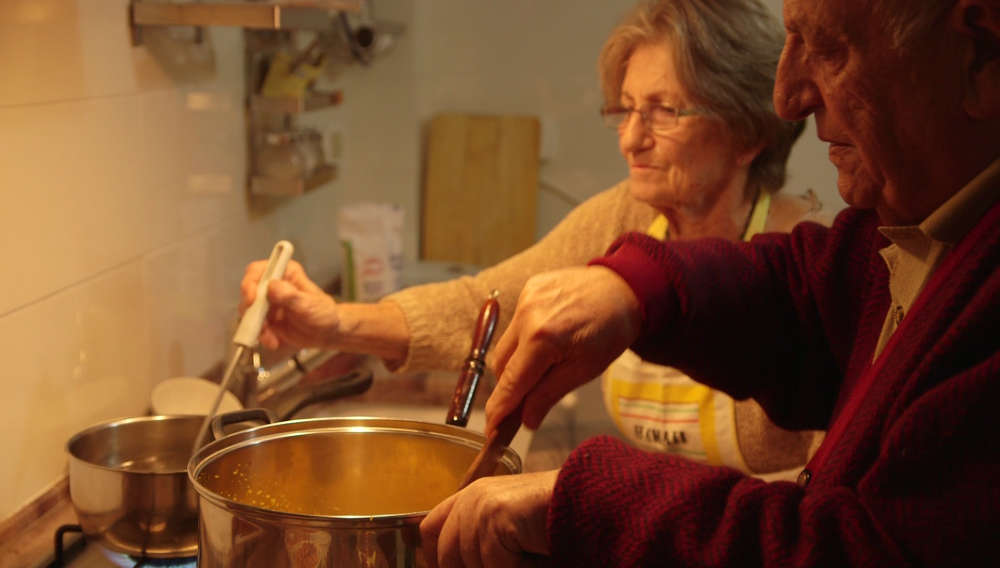
Palestinians recognize that their cuisine is part of a broader regional cuisine. What the world needs to recognize is that this region is the cradle of all civilizations, and the land of Mesopotamia cooked different versions of dishes now pictured on Instagram and Twitter and dubbed “Israeli” long before Israel ever existed as a political entity.
I am aware that people are agitated when talking about culture and food appropriation. That is not appropriation, they might claim, it is fusion. But what we have here is not cuisine fusion, because fusion, much like interdisciplinary approaches in education, may very well be asymmetrical, where one cuisine contributes more to the fusion dish than the other. However, both cuisines are properly recognized, respected, and celebrated. While fusion is a celebration of cultures coming together, food appropriation and theft occur when one culture simply steals the food of another without any recognition of the existence of the other.
Palestinians do not eat food only to survive. Our cuisine is a product of a long-standing relationship with our land: mahashi (vegetables, mostly zucchini and eggplant, stuffed with rice and minced meat) are enjoyed in the winter to warm your heart and give you energy; watery spinach, rich in iron, is just what you need at the end of a cold day; khobbaizeh (malva parviflora) grows abundantly in late winter/early spring and is full of vitamins and nutrients needed to revitalize us after the cold season. And in the spring there is fool akhdar biz-zeit (green beans with olive oil) and za’atar akhdar (“green,” i.e., fresh thyme) for salads and salty pastries. The intrinsic connection we have with our land brings to our table colorful dishes and into our kitchens and cuisine intricate techniques of preparation and preservation: kneading, baking, stuffing, rolling, drying, pickling, and much more. Our food is a representation of the villages we lived in, the land we farmed, the olives we harvested, the weddings we danced in, and the funerals we walked in. Dishes connected to destroyed villages still make their way to our tables as we cook to remember a lost land and threatened existence.
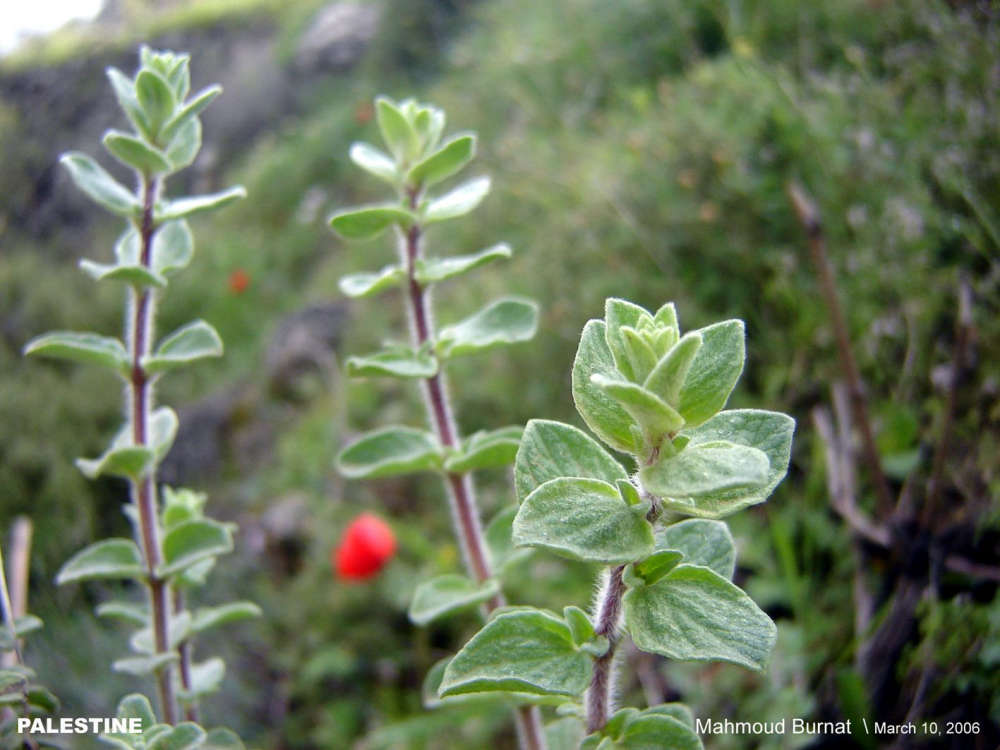
For Palestinians forced out of their land in 1948, food is in the past tense, only to be brought into the present when dishes from their villages are made today to bring back a glimpse of the colorful squash, herbs, and crops of village life. For those who live in Gaza, food in the refugee camp is unwholesome, an unfinished puzzle with pieces missing.
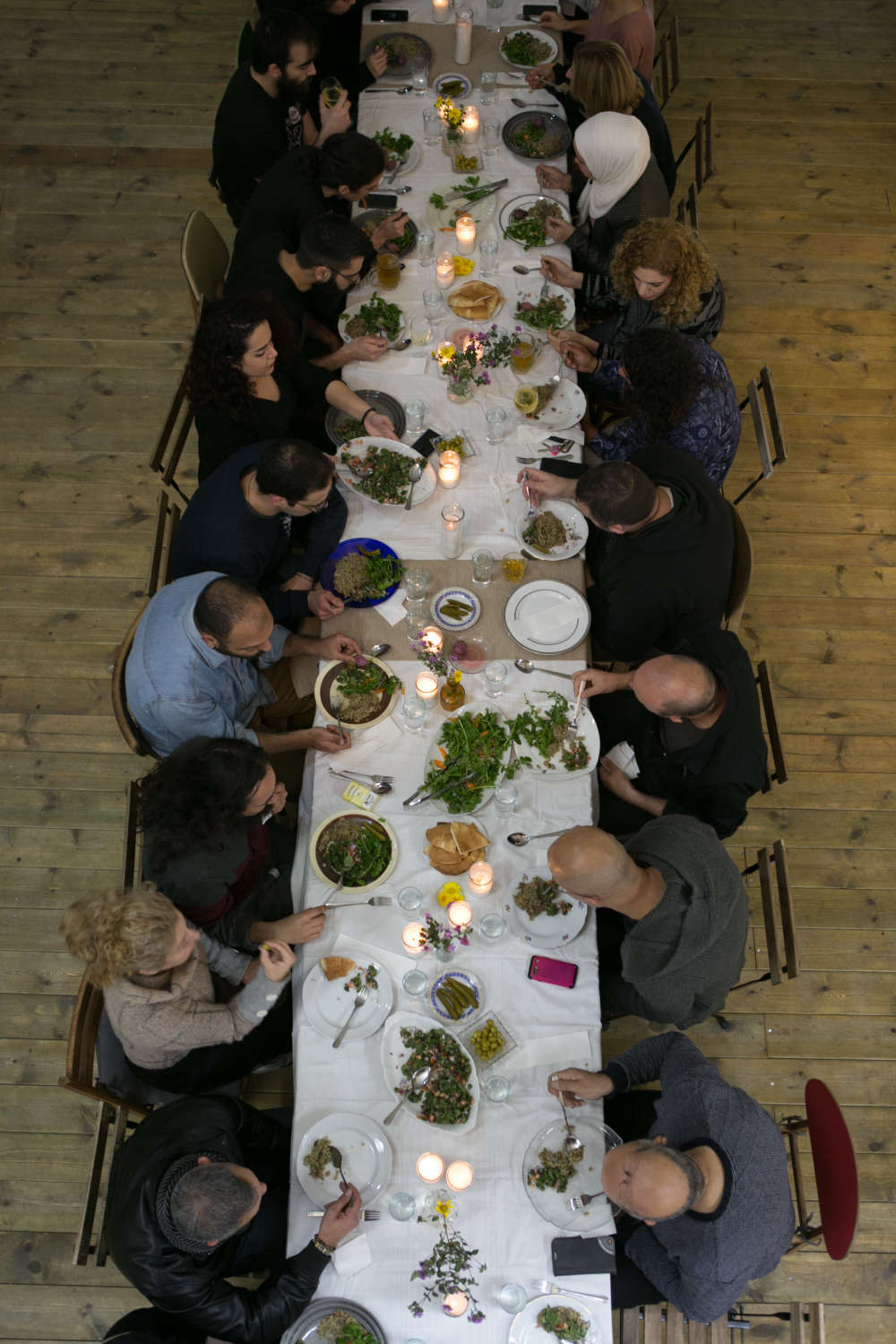
So when The New York Times claims that Israeli sahlab is the new latte, or when international food bloggers visiting Jerusalem claim that they enjoyed Israeli delicacies in the Old City and post pictures of themselves with Abu Mohammad making halaweh in the background, our stomachs will turn in pain and rejection. It is quite ironic that as Rachel Ray tweeted colorful photos of “Israeli mezza” that featured baba ghanoush (eggplant dip), hummus, and tabbouleh just a few days before Christmas, Christian Palestinians were making that exact same mezza for Christmas Eve. To claim that this mezza is exclusively Israeli is no different from white American churches hanging photos of a blond, blue-eyed Jesus Christ. That is not appropriation, whether intentional or not; those who do it are participating in the theft and disappearance of a culture.
In recent years, Palestinian food enthusiasts, bloggers, writers, artists, and anthropologists have started to gain momentum. Laila El-Haddad, Rula Bishara, Joudie Kalla, and many more food enthusiasts are making a splash on the food-culture scene and are reclaiming Palestinian dishes with superb recipes and riveting family stories. If you ask most of them, they would tell you that they write to keep a record for themselves, that their books began mainly as memories they wanted to preserve. Many of these writers reside outside Palestine.
I think the challenge of being a food writer in Palestine is quite obvious. How can we write about food and the richness of our cuisine when we are surrounded in every direction by land confiscation, child prisoners, unemployment, and poverty? How can we talk about food when hunger strikes are on and off in Israeli prisons? I myself haven’t reconciled this jarring difference, but I know that if we do not move to make our presence known on the food-culture scene, we will continue to watch our favorite childhood dishes be hijacked. Perhaps if we continue to cook together, always connecting our dishes to the land we came from, it stops being food-writing for the sake of pleasure but rather a conversation on identity and existence.

A new project called Palestine’s Hosting Society began last August by the artist Mirna Bamieh. The collective has several projects from food tours to family dinners to restaurant takeovers where Palestinian ingredients are reimagined in fusion dishes and restaurant cuisine. It is dynamic as more people join and reinvent and rejuvenate the collective so that it may tell a broader story. The family dinner project documents the food traditions of Palestinian families as people cook and invite others to their dinners, and tables become a space to explore food and hospitality politics, share experiences, and reconstruct people’s relationship with food, place, and space. In Haifa, Suzan Matar, hosted a dinner with the theme Min Moonet Sitti (From My Mother’s Pantry), where she featured dishes made from the typical Middle Eastern pantry with things like sun-dried tomatoes, homemade maftool (hand-rolled tiny pasta pearls), pickled vegetables, and home-dried labaneh (strained yoghurt). While her grandmother is Lebanese, those items and techniques are staples in any of our kitchens. More projects like this one are needed as Palestinians living in Palestine reclaim their dinner tables and with them, their connection to their lands. Another family dinner featured the Gazan kitchen with such dishes as rummanieh, originally from Yafa, which became part of the Gazan kitchen as refugees brought it with them. Rummanieh has now been nearly forgotten in Yafa, but that night people were able to rediscover Gaza through the smells and tastes of the dishes served. (www.palestinehostingsociety.com)
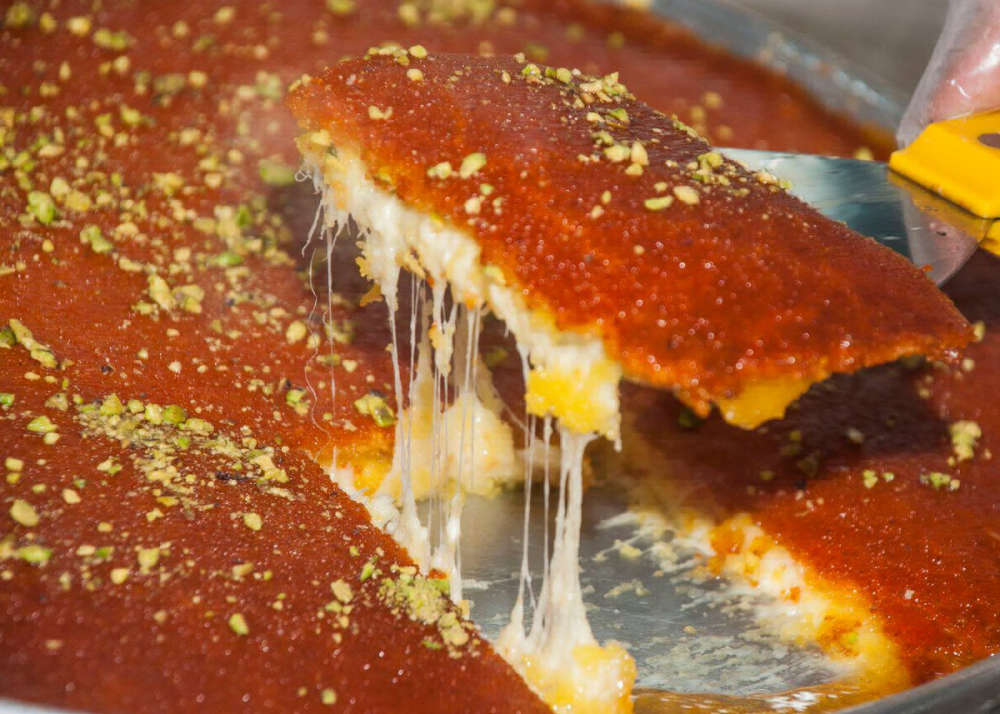
Our struggle is uphill; dishes we have known and loved since our childhood will continue to be claimed as Israeli. Musakhan (glazed onions served on a special bread with chicken, roasted pine nuts, and freshly pressed olive oil, spiced with sumac and allspice) will most probably be appropriated as holiday food in Israel, and knafeh will take different shapes and forms as its theft continues. As you dip your bread into yet another “Israeli dip” and tweet pictures of it from the heart of Ramallah, Nablus, or Jerusalem, I hope you taste in the ripples of the olive oil the confiscated groves and their burnt trees, I pray you feel the dispossession that afflicts Palestine and Palestinians, but also their resilient spirit and determination to continue to exist.

